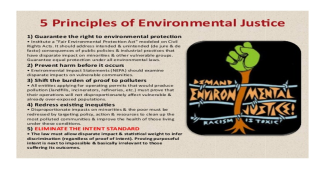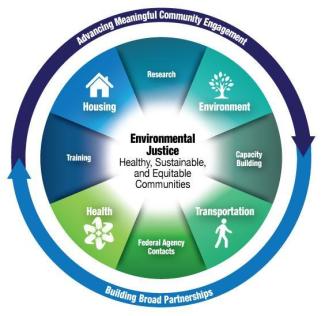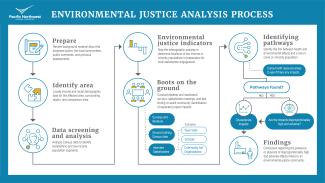Redeveloping Your Brownfield
You may find that cleaning up a contaminated site can be not only complex, but also costly, if not done right. You may also be surprised to learn that your problem is relatively simple and well within your budget. In either case, you should retain an environmental consultant.
Finding the Right Consultant
The right consultant will depend on the process required to be undertaken, the type of contamination, and your budget. Always get several quotes before hiring a consultant. The cheapest one is not always the best one for the job. The State is not allowed to give advice on hiring a consultant
Questions for Prospective Consultants
- Does the consultant have adequate staff to complete the project within your specified timeframe?
- What individual(s) will be assigned to your project and what qualifications, training or experience do they hold? Ask for resumes.
- With respect to Health and Safety issues, how does the contractor maintain adequate site control and monitor site conditions while work is in progress?
- Describe how the employees are familiar with the firm's Quality Assurance/Quality Control protocols. (environmental sampling and preservation techniques, documentation of sampling events, etc.)
- What are the hourly costs associated with each person working on the project?
- Can the consultant provide letters that demonstrate the firm has a good working relationship with subcontractors (drilling companies, laboratories, surveyors, construction companies, etc.)
- Does the design engineer have experience using at least three different remedial technologies to remediate releases of hazardous substances?
- Does the consultant have experience in identifying and obtaining easements, permits, settlement agreements and approvals as necessary in order for the implementation of the remedial action?
- Will the contractor provide a listing and description of all environmental sampling related equipment that is owned or readily accessible (indicate source) by the firm?
- What types of liability insurance (pollution liability and errors or omissions) does the consultant (or any subcontractors it plans to use) have?
- What does the policy cover and what are the limits?
- How does the consultant bill you?
- Has the consultant done work in Rhode Island in the past? How many sites?
What is it? - Provides a determination as to the likelihood of contamination at a Site and the potential areas of concern based on the Site's history.
Includes:
- Description of Site and Vicinity
- Environmental Setting
- Historical Use Information
- State and Federal Regulatory File and Database Review
- Previous Site Investigations
- Site Reconnaissance
- Interviews
- Recommendations
ENGAGE YOUR COMMUNITY!!!
The community in which your property lies is a valuable asset to any project. It is essential to engage the community before taking on any project. Community members may be able to provide information regarding the history of a project. Find out what they know and what they might want to see as part of redevelopment.
The community should be engaged throughout the entire project. Per RIDEM's Remediation Regulations, a pre-and post-site investigation public notice should be issued to abutters, providing them with information regarding the project and providing an opportunity for community members to raise questions.
Environmental Justice
Communities in Environmental Justice Areas will require additional engagement.
What is Environmental Justice? - EJ is the fair treatment and meaningful involvement of all people, regardless of race, color, national origin, or income, with respect to the development, implementation, and enforcement of environmental laws, regulations, and policies.
What is an EJ Area? - EJ focus areas are defined as United States Census block groups that are in the highest fifteen percent (15%) of all Census block groups in Rhode Island with respect to the percent population identified as racial minorities or the highest fifteen percent (15%) of Rhode Island census block groups with respect to percent population with income identified as being twice the federal poverty level or below (utilizing the most recent and readily available data from the United States Census).
What is it? - A report based on the information previously collected during the Phase I stage and which may involve sampling and testing the air, water, soil, and buildings for various hazardous substances. The goal of the site investigation is to reveal evidence of historical spills and leaks of hazardous materials, hazardous waste, or petroleum and to determine the source, nature, and extent of contamination.
Includes:
- Soil Sampling
- Groundwater Sampling
- Evaluation of Remedial Alternatives
What is it? - Remedial plans are outlined in a Remedial Action Work Plan (RAWP). The RAWP sets out the methods to be used to remove, treat, or otherwise limit exposure to contamination. The report must demonstrate that best management practices will be used to prevent exposure to harmful levels of substances, and minimize and manage runoff during the cleanup. Additionally, the RAWP must specify the procedures for emergencies, operational logs, security, closure, public notice, and land use controls.
The goal of remediation is to protect human health and the environment.
Cleanup standards are dependent on:
- The proposed reuse of a Site - sites proposed for residential, educational, and/or recreational type re-uses will have more stringent clean up requirements than industrial/commercial sites
- Whether soil and/or groundwater is impacted at the Site
- Groundwater quality at the Site - areas with the cleanest, drinkable groundwater (GA) are required to be held to a higher standard than those areas with groundwater that is already compromised (GB)
- Whether engineered and/or institutional controls will limit exposure to contamination
The time it will take to cleanup a site will vary from project to project.
Despite potential challenges of redeveloping brownfields, there are also several advantages in choosing such a site over a previously undeveloped property. Many brownfields are part of highly urbanized areas or along waterfronts, where undeveloped land may be scarce or nonexistent. Many sites are already connected to utilities and other infrastructure, may have railways or transportation nearby, or may have historical value with elements that can be preserved and incorporated into the final vision for redevelopment. Cleaning up and redeveloping a brownfield can help to revitalize the surrounding community, create jobs, improve public health, and preserve open space. There are also a number of potential financial incentives available to developers at brownfield sites.
Redevelopment Options
- Affordable and/or Residential Housing
- Industrial / Commercial
- Mixed-Use Space
- Open Space / Green Space
Redevelopment Advantages
- Existing Infrastructure
- Tax Incentives
- Labor Concentration
- Improve public health and safety
- Improve air and water quality
- Preserve historical landmarks and heritage architecture
- Beautify urban landscapes
- Reduce neighborhood blight
- Facilitate job growth
Consider Opportunity Zones
The 2017 Tax Cuts and Jobs Act established the Qualified Opportunity Zone (OZ) Program to provide tax incentives for private, long-term investment in economically distressed communities. The tax incentive allows for private investors to direct capital gains into equity investments in qualified projects within a designated OZ. The incentive is designed to encourage long-term investment — with certain tax benefits kicking in only after the investment is maintained for at least ten years.
What is an OZ? - A community nominated by the state and certified by the Treasury Department as qualifying for this program. The Zones established in Rhode Island include certain tracts of properties in Providence, Pawtucket, East Providence, Warren, Bristol, Newport, Westerly, Narragansett, Cranston, Warwick and Woonsocket.
How does an OZ work? - Investors can invest in an OZ through Qualified Opportunity Funds. Eligibility as an investor is broad and open to individuals and businesses, including corporations and partnerships. Investors are eligible to take advantage of certain benefits on the taxation of their capital gains.




